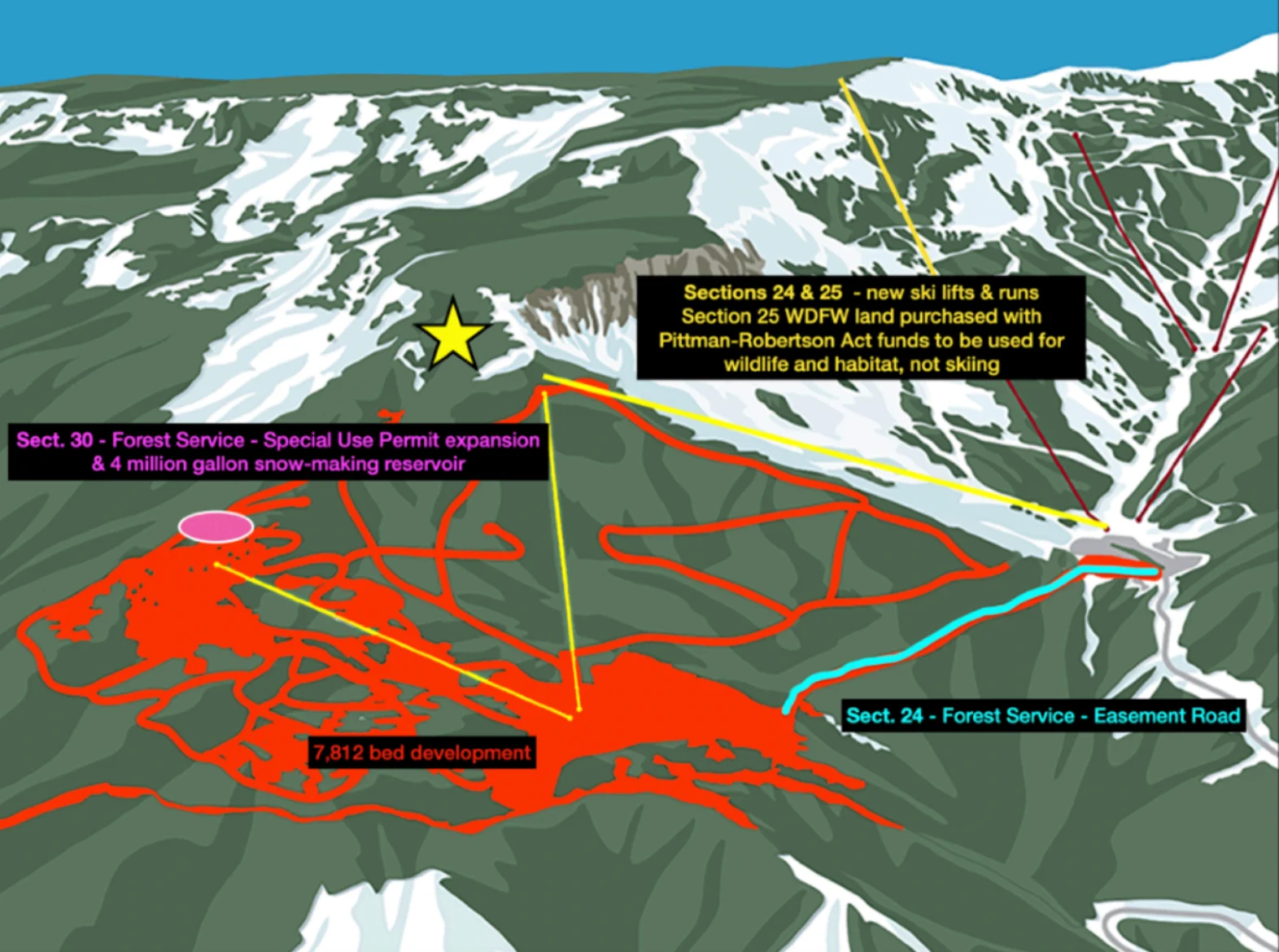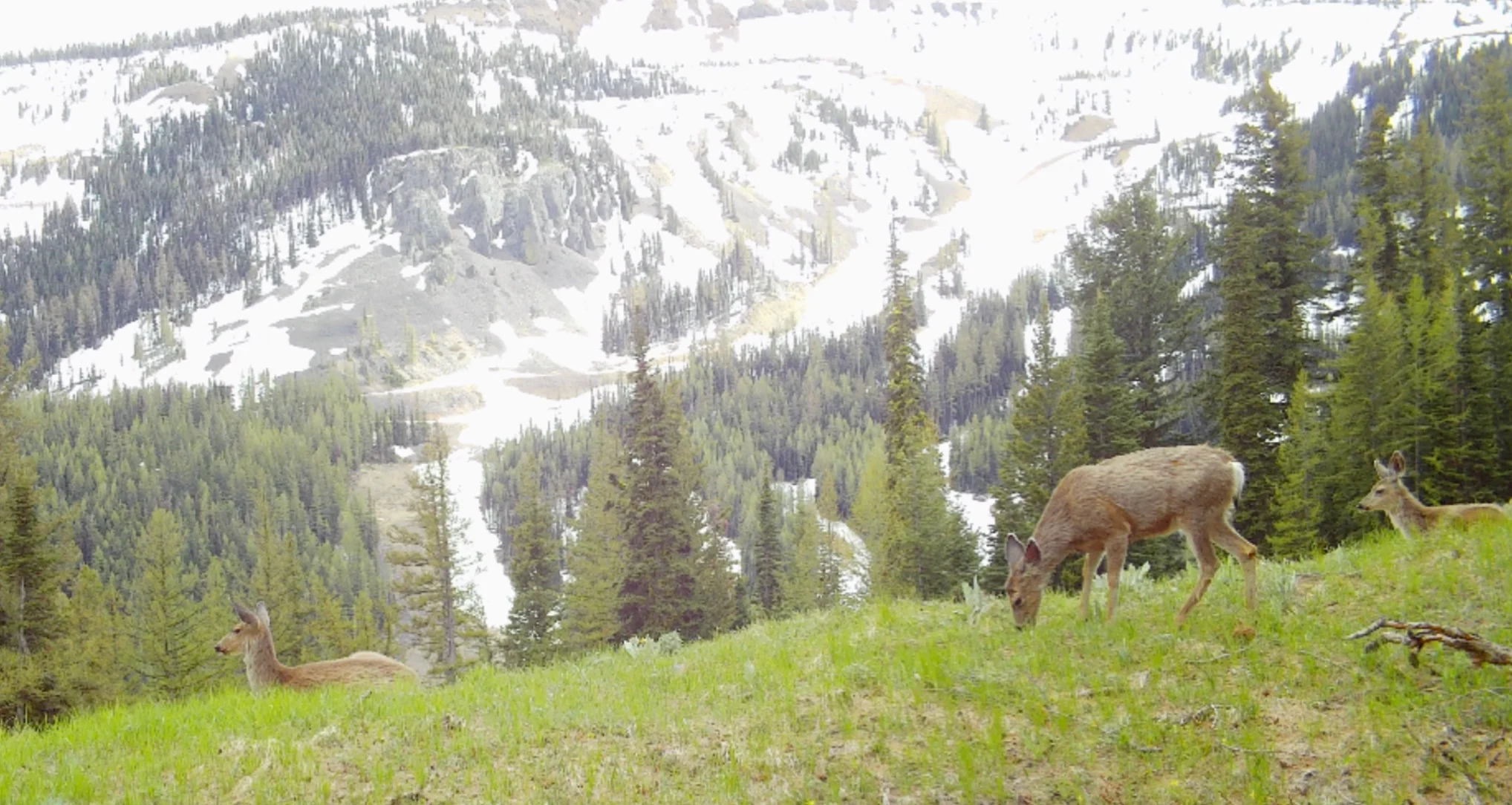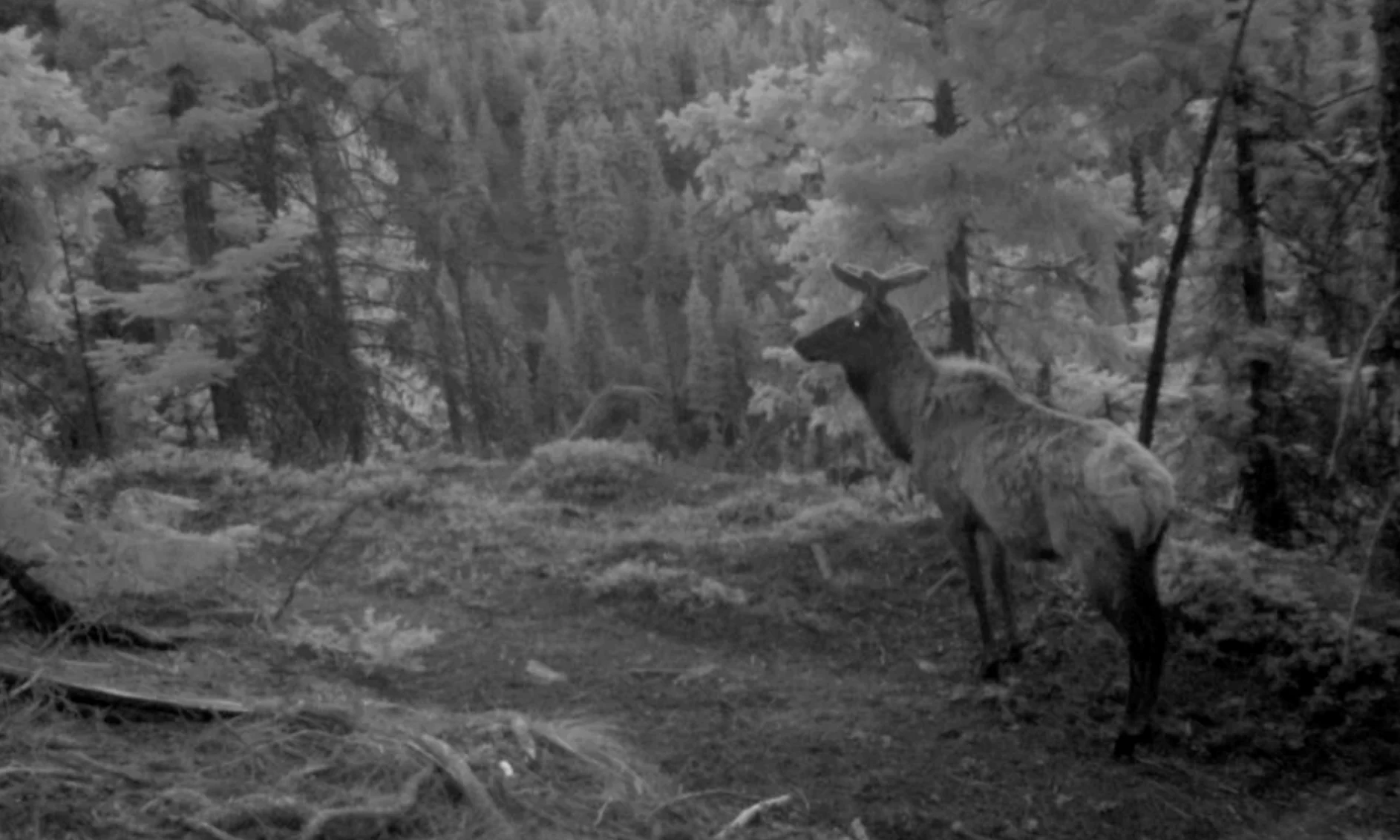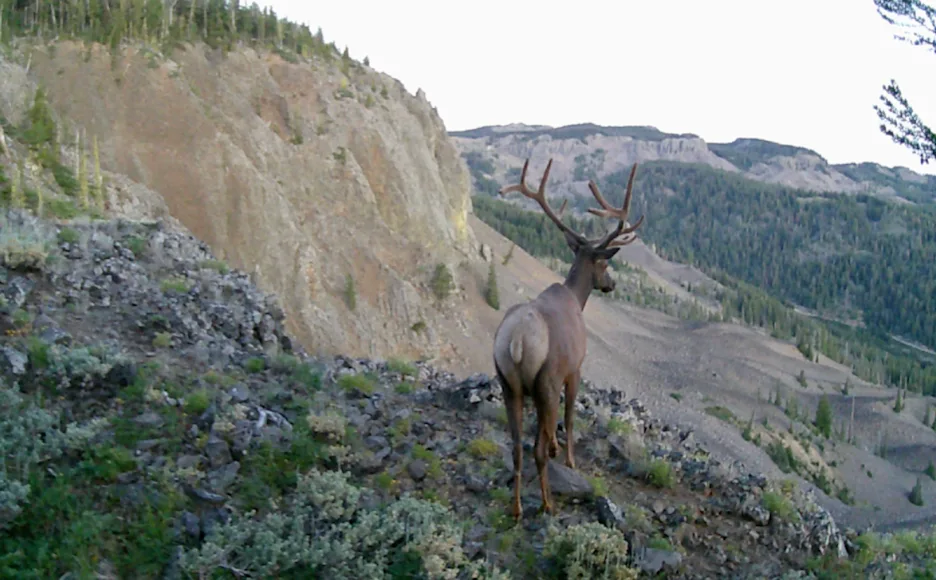In the center of Washington state, just outside the orchard town of Wenatchee, sits Mission Ridge, a modest local ski hill surrounded by national forest and state wildlife lands. While many locals enjoy this hill for skiing, it's also a popular area for mountain biking, hiking, fishing, and dirt biking. And the landscape is prized by local hunters for its migratory elk and mule deer herds.
Now, a proposed ski area expansion, pitched by the owners of Mission Ridge Ski Area, would add more than 7,800 beds of lodging and new infrastructure, transforming the mountain basin into what opponents describe as a “mini resort town.”
To make it happen, the developer is seeking approvals from Chelan County, the U.S. Forest Service, and the Washington Department of Fish and Wildlife (WDFW), including an easement road across Forest Service land and a controversial land swap. That land was initially purchased in 1953 with Pittman-Robertson Wildlife Restoration Act funds to protect the Colockum elk herd.

The developer says the expansion would bring tourism dollars, new jobs, and additional tax revenue to the region, framing it as an economic boon for the local community. Critics, however, warn that the environmental costs and impacts on public lands could outweigh these benefits.“They’ve been pitching it as a ski expansion,” said Steven Gnam, board member of the grassroots nonprofit Friends of Mission Ridge. “But when you dig into the details, it has very little to do with skiing and a lot to do with urban-style development.”
The project’s Draft Environmental Impact Statement (DEIS), released on Sept. 5, claims minimal effects on wildlife, stating that nearby “equivalent habitat” could accommodate any displaced species. But that assumption, Gnam said, doesn’t hold up to scrutiny.

A year-long trail camera study conducted by Friends of Mission Ridge documented elk, mule deer, mountain lions, black bears, bobcats, golden eagles, northern goshawks, pika, and dozens of smaller species within the project area, including several in spots the DEIS classified as low-quality habitat. Cameras even captured a cow elk leading her newborn calf through the proposed site of a 4-million-gallon snowmaking reservoir.
“The DEIS reads more like a marketing manual than a scientific assessment,” Gnam said. “We found elk in waist-deep snow where the report said there were none. It completely missed the on-the-ground reality.”
According to the developer, environmental protection has guided the project’s design. “From early planning to present day, environmental stewardship has been a guiding priority,” the company states on its website. “We’ve conducted years of studies, preserved wildlife corridors, and prioritized water quality to ensure that growth supports long-term environmental health.”

Friends of Mission Ridge, local hunters, farmers, and community members are worried that the development would destroy a wildlife migration corridor and limit public access. Under one proposal, the developer would construct a new road across Forest Service land and then “gift” it back to Chelan County for maintenance, effectively, Gnam said, “turning public land into a private developer’s driveway.”
Read Next: Mike Lee’s Latest Attack on Public Lands Targets the Wilderness Act
Beyond Washington, the fight to preserve Mission Ridge’s wildlife habitat and public access mirrors broader national tensions over the privatization of public lands. “This isn’t just about a ski hill,” Gnam said. “It’s about whether we’re willing to let private interests profit from lands and wildlife that belong to all of us.”


